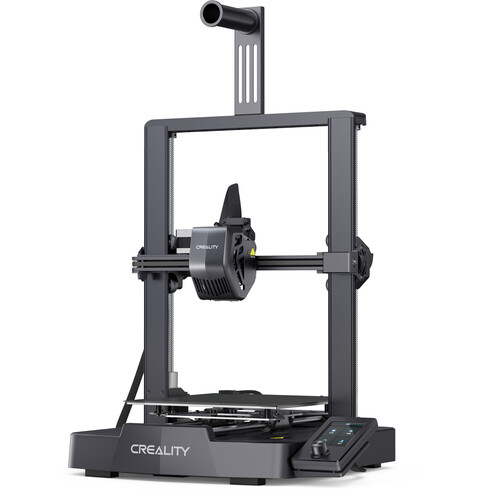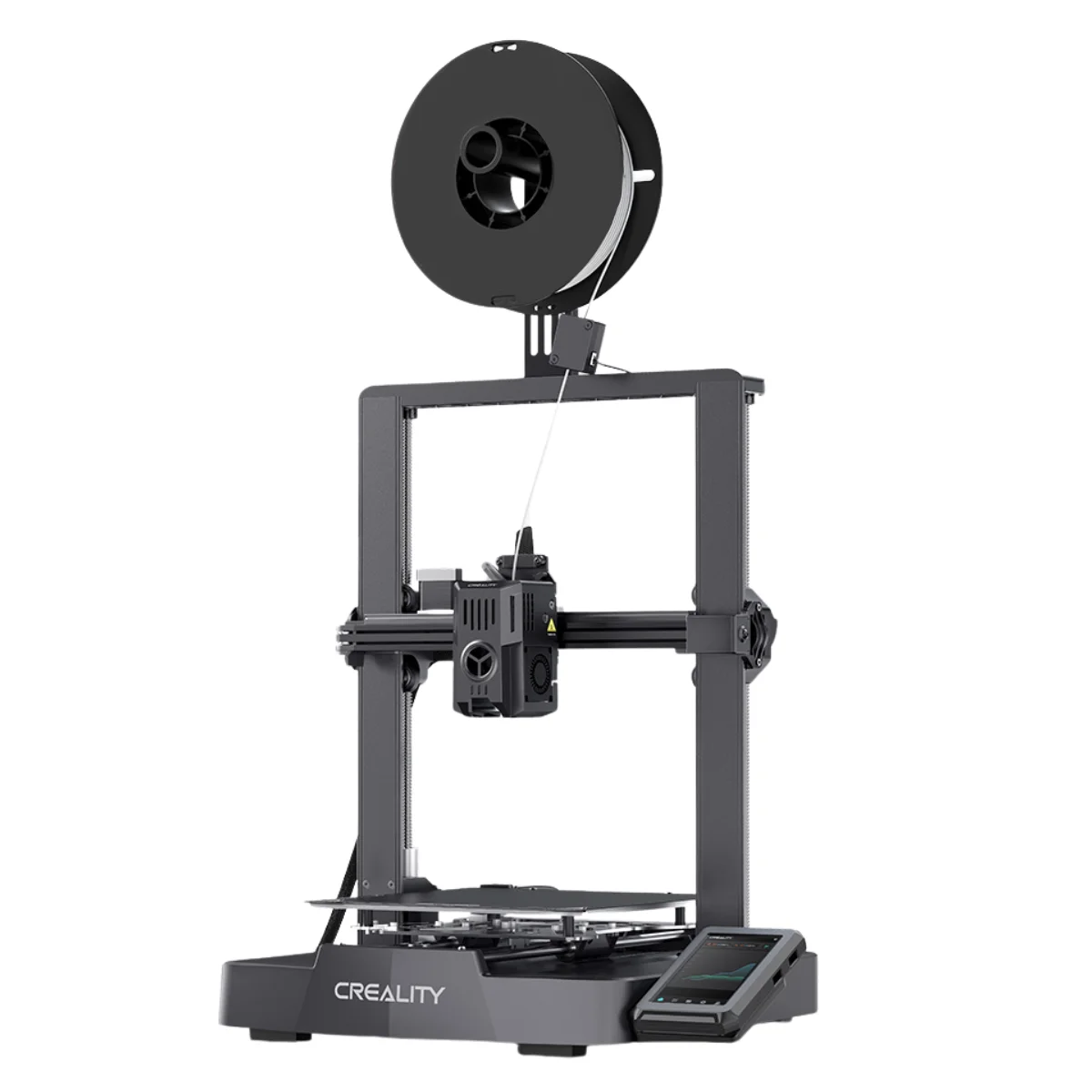Compare Ender 3 V3 SE vs Ender 3 V3 KE
Comparison between the best 3D printers
Choose the best 3D printer at the best price. The cheapest 3D printers are here.
Buy a 3D printer here with 3D Fila.
 |
 |
|
| Model | Ender 3 V3 SE[BUY Ender 3 V3 SE] |
Ender 3 V3 KE[BUY Ender 3 V3 KE] |
| Printing Material | Filament | Filament |
| Buy Filament for Creality Ender 3 V3 SE | Buy Filament forCreality Ender 3 V3 KE | |
| Estimated price | $199,00 | $279,00 |
| Manufacturer | Creality | Creality |
| Release Year | 2023 | 2023 |
| Print Volume [mm] | 220x220x250 | 220x220x240 |
| Printer Size [mm] | 420x366x490 | 433x366x490 |
| Weight [kg] | 7,34 | 7,8 |
| Power Loss Recovery | NO | YES |
| Enclosed printer | NO | NO |
| Bed Leveling | Automatic | Automatic |
| Filament End Sensor | NO | YES |
| Bed type | Heated | Heated |
| Power supply system | Direct Drive | Direct Drive |
| Standard nozzle | 0,4 | 0,4 |
| Maximum Nozzle Temperature [°C] | 260 | 300 |
| Maximum Bed Temperature [°C] | 100 | 100 |
| Maximum printing speed [mm/s] | 250 | 500 |
| Filament holder | YES | YES |
| Camera for supervision | NO | NO |
| Recommended filaments | PLA, PETG e TPU (95A+) | PLA, PETG e TPU (95A+), ASA |
| Recommended slicers | Creality Print, Cura 5.0 ou superior, Prusa Slicer, Orca | Creality Print, Cura 5.0 ou superior, Prusa Slicer, Orca |
| Maximum Resolution [mm] | 0,1 | 0,1 |
| Processor | 32-bit Silenciosa | 32-bit Silenciosa |
| Display | 3,2'' + Knob | Touchscreen 4,3'' |
| Power Supply | 350 W | 350 W |
| Connectivity | SD | USB drive, LAN, Creality Cloud APP |
| Operating systems | Windows, Linux, Macbook | Windows, Linux, Macbook |
| Date of registration in the system | 2024-03-06 | 2024-03-06 |
| Release date | 2023 | 2023 |
| Extra features | The Ender 3 V3 SE stands out for its easy assembly, excellent automatic bed leveling, direct extrusion and easy interface, ideal for beginners. Although it uses a coated PC board, it offers robust performance, with print speeds of up to 250mm/s, thanks to a solid construction and linear rods on the Y axis. It lacks Wi-Fi, preferring file transfer via SD card. | The Ender 3 V3 KE, an advancement in the Ender line, achieves print speeds of up to 500mm/s with its touchscreen and WiFi connectivity. Although it has a slightly smaller print area than the SE model, it makes up for it with superior print quality. Its robust design, high-quality components, and intuitive wireless control are appreciated, although Creality's mobile app lacks practicality and does not have a closed system. It stands out for its linear track on the X-axis for stability at high speeds and the hotend that supports up to 300°C, ideal for high-temperature filaments. |
| Support for multiple colors and materials (AMS and CFS) | NO | NO |
Notes * |
||
| Cost-benefit | 7 / 10 | 7 / 10 |
| Hardware | 0.8 / 10 | 3.2 / 10 |
| Tela | . | . |
| Print volume | 3 / 10 | 3 / 10 |
| Performance | 2 / 10 | 4 / 10 |
| [BUY Ender 3 V3 SE] | [BUY Ender 3 V3 KE] |
Conclusion |
| In comparing the Creality Ender 3 V3 SE and Ender 3 V3 KE, several factors emerge that can guide potential buyers in making an informed decision. The Ender 3 V3 SE stands out for its affordability and user-friendliness, making it ideal for beginners venturing into 3D printing. It boasts easy assembly, efficient auto bed leveling, and a solid construction that supports a print speed of up to 250 mm/s. However, it lacks certain modern features such as Wi-Fi connectivity and a filament end sensor, which may limit its usability for advanced projects. In contrast, the Ender 3 V3 KE, although slightly more expensive, offers enhanced performance and features that cater to more experienced users. With a maximum print speed of 500 mm/s and the ability to reach higher temperatures for advanced filaments, it presents improved print quality and greater versatility. Its touchscreen interface and additional connectivity options, such as USB and LAN, provide a more modern and user-friendly experience. However, it has a marginally smaller print volume and is less accessible for budget-conscious buyers. Overall, if you prioritize budget and are new to 3D printing, the Ender 3 V3 SE may be the better choice. On the other hand, if you seek superior printing capabilities and are willing to invest more for advanced features, the Ender 3 V3 KE presents a compelling option. The decision ultimately hinges on your experience level, project requirements, and how much value you place on features and performance. |

